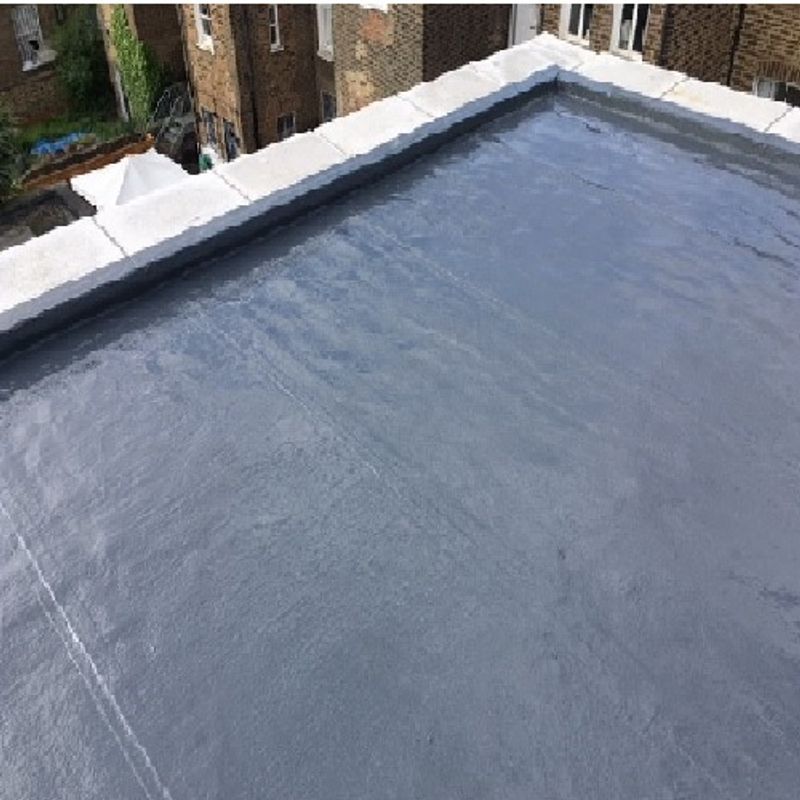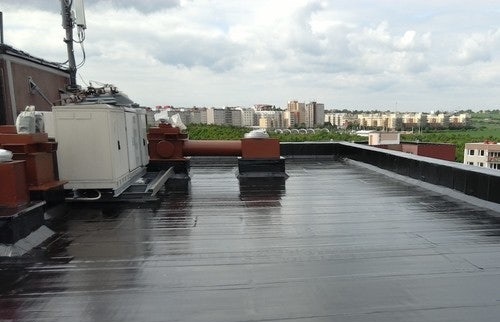The popularity of liquid roofing has skyrocketed in recent years.
This should come as no surprise, as liquid roofs come with plenty of benefits.
The thing is:
Liquid roof membrane kits are affordable, DIY-friendly, eco-friendly and highly durable.
And if you already have yours in place, you’re probably wondering what you need to do to take care of it, right?
At Roofing Superstore, we put together a list of liquid flat roof maintenance tips to help you along.
Table of contents:
How do you care for a membrane roof?

One of the main pros of liquid roofs is that they’re virtually maintenance-free. Still, it’s always a good idea to look after them.
This way, you’ll be able to spot any issues early on, allowing for swift and easy repair work.
With that in mind, here are our top liquid roof membrane aftercare tips.
Check your roof regularly
This might seem like an obvious thing to do, but you’d be surprised how many homeowners don’t inspect their roofs.
The fact that, unlike with a pitched roof, you can’t actually see your flat roof from the garden only makes things worse.
Far from eye, far from heart.
So, make sure you take your ladder out, climb up and have a look at what’s up there. You don’t have to do this all that often, especially during the summer. The best time to inspect your liquid flat roof is after a period of extended rainfall and high winds.
Frequent checks are also advisable in the autumn when the leaves start to fall. As you do this, keep an eye out for any cracks, marks or holes.
Clean the liquid roof
Flat roofs will inevitably collect plenty of debris, grime, leaves, twigs and possibly even branches over time. And you definitely don’t want them there, so cleaning your rubber liquid roof is something you’ll have to do occasionally.
Maybe you’re wondering:
Can you walk on a membrane roof?
Yes, you can walk on a liquid membrane roof as soon as the coating is fully dry and cured. This will take up to 24 hours depending on the product.
So, once you’ve climbed up on the roof, use a broom to sweep away all the rubbish and any standing water. You might want to use a brush to sweep around the corners and edges because that’s where any potential cracks and leaks are likely to occur.
A word of caution:
Because liquid roofs are water resistant, they’re likely to get quite slippery during the stormy season. So, take extra care in such trying conditions.
If you notice any stains, you can use a simple solution of detergent and warm water to get rid of them.

Prune any nearby trees
Leaves finding their way to your flat roof are mostly a nuisance. Unfortunately, that’s not the case with larger branches, which might scratch or even seriously damage the liquid membrane. If you’re noticing a few of them time and time again, chances are they’re coming from your own garden.
And that’s a big problem.
To prevent this from happening, prune any nearby trees carefully. It’s best to get rid of any branches overhanging parts of the roof altogether, as they’re a potential safety hazard not just to the roof itself but to the guttering and fascia as well.
As an extra bonus, maintaining your garden trees will make your property a more pleasant place overall and raise its value.
Carry out any necessary repairs
Because liquid roofs are so durable, there shouldn’t be any issues with large cracks or holes if yours was installed properly. You can use roof seal sealant to fix any minor problems.
If these are around the seams or edges, it’s a good idea to add reinforcing matting or fibreglass. Make sure you remove any old, worn-out reinforcing material first.
So far so good:
If there are several large problem areas across different parts of the roof and no obvious reason for the damage, though, it might be best to call in the professionals.
These are signs that something is seriously wrong – and the longer you delay, the worse things are going to get.
What is the lifespan of a membrane roof?
With your brand-new liquid roof coating in place, you’d naturally want to know how long does a rubber roof last.
Now:
We’ve already mentioned that liquid roofing membranes are quite durable. If installed properly with a thick-enough coating, they’re likely to last anywhere from 15 to 25 years.
Conclusion
Liquid roofing is a great way to protect your flat roof from the elements.
What’s more:
Liquid roof membranes are easy to apply and even easier to look after.
The bottom line is:
Liquid flat roof maintenance can be a breeze as long as you don’t forget to do a few simple things.
















